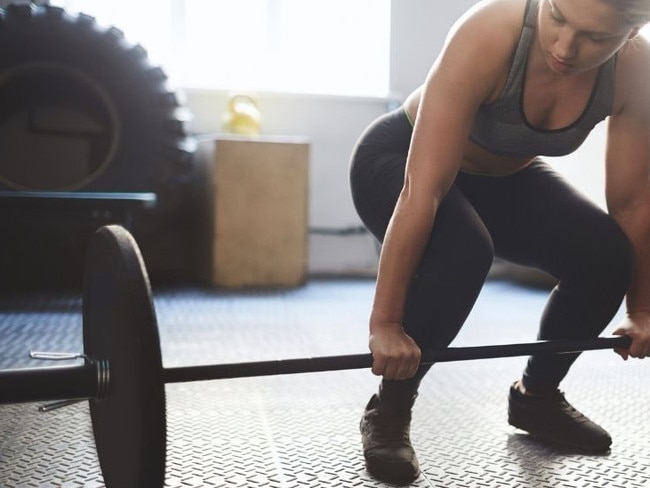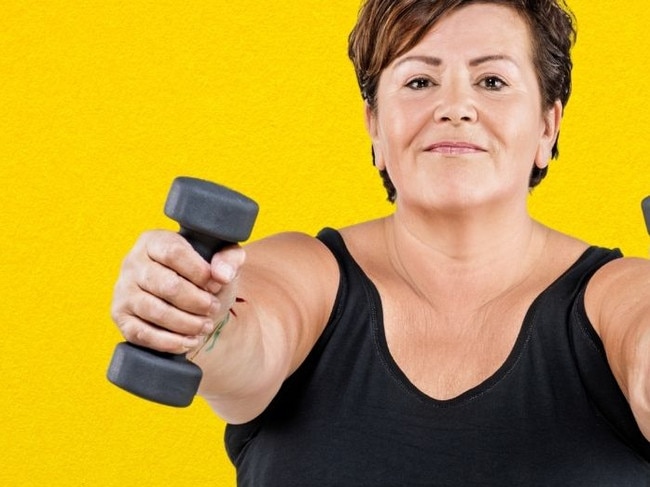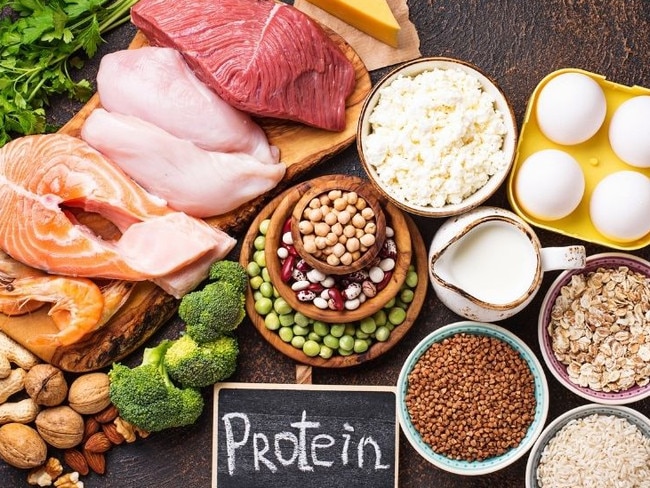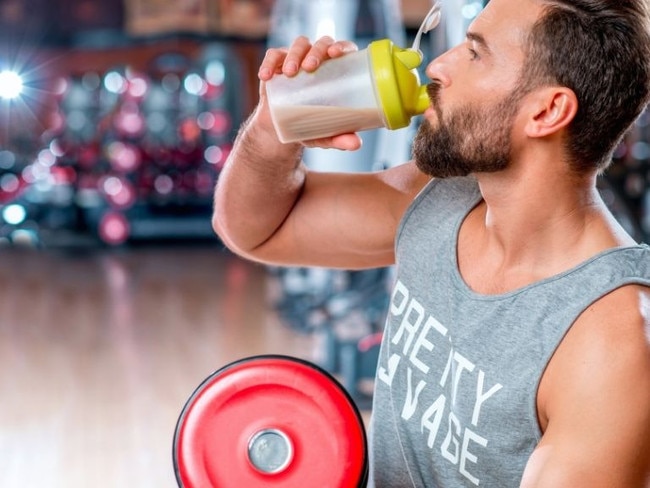Weight training: How to start doing it in midlife
Using dumbbells can transform the body and you can do it at home. But how much should you lift? And how often?
Strength Training
Don't miss out on the headlines from Strength Training. Followed categories will be added to My News.
You’ve bought a set of dumbbells, but do you really know what you should be doing with them? Resistance training is touted as being the most important thing we can do to improve the strength and appearance of a midlife body, protecting it against the inevitable muscular decline that occurs naturally as we age. And yet misconceptions abound about how best to build stronger, healthier muscles.
“Strength training is one of those things that can seem overcomplicated with so many different opinions and advice,” says George Morris, an exercise physiologist and strength and conditioning coach at St Mary’s University, Twickenham. In fact, Morris says, the basics are simple. Here’s how to get started …
What’s a good starting weight?
As a very rough guide, women starting out from scratch should invest in 3-5kg dumbbells and men 4-6kg.
However, Morris says there is huge variation between individuals as well as with the weight you can lift for different exercises. A set of dumbbells of different weights is a good investment. “Rather than state an absolute starting weight, I prefer to apply the rule of thumb that you should lift a weight that allows you to have two reps in reserve, but no more,” Morris says.

“That means that if you are performing 12 repetitions per set, you could maybe lift 14 at a push, but the weights are too light if you think you could lift 14 or more.”
Lifting too heavy a weight is tempting, but not a good idea. “If you are not adequately conditioned or have poor technique, your muscles, connective tissues and bones are at risk of injury when you lift too much too soon,” Morris says. “You will also most likely experience excessive delayed onset muscle soreness, or Doms, which can leave you sidelined from exercise for a few days, sort of defeating the purpose.”
When should you add more weight?
Your muscles need a progressively greater stimulus to see ongoing changes. Look to add approximately 10 per cent in weight every 2-3 weeks when you are starting out. Certainly, don’t fall into the trap of what US surgeons reporting in the Journal of Craniofacial Surgery termed “ego-lifting”, defined as sacrificing “good technique in pursuit of better numbers or metrics”, something which “proves hazardous, especially to the inexperienced participant”. There’s no need to rush things. “Strength training does need to be progressive to be effective,” Morris says.

“But add weight in increments only once you find you can easily accomplish several sets of an exercise with a previous weight.”
How many times a week should you lift weights?
Physical activity guidelines set by the UK government suggest that, as a minimum, adults should do “strengthening activities that work all the major muscle groups on at least two days a week”. Although this doesn’t have to be weight training – resistance band exercises and body weight workouts also count – progressing to weights would be among the best options.

Harry Jameson, the personal trainer, says that three to four times a week is optimal if you can fit it in, ideally on non-consecutive days. “You will need to work up to that,” Jameson says. “And this activity is in addition to aerobic activity such as running, cycling and rowing, which will also help to build stronger muscles.”
Which exercises are essential?
Compound movements that involve multiple muscles and joints with each exercise should always form the basis of any weight training program, partly because they provide better bang for your buck by using up more energy. Examples are squats, lunges, pull-ups, bent over rows and thrusters. “Think about working the body’s biggest muscles for greatest effect on strength and metabolism or fat burning,” Jameson says. “They are also the moves that will make you functionally stronger so that you can lift, carry, climb and reach when you get older.” Exercises for smaller muscles such as the biceps and triceps should ideally be reserved until the end of a gym session.
Should you lift weights fast or slow?
Lifting weights in a slow, controlled way has been shown to result in greater strength gains than speedy repetitions, the theory being that it extends the time muscles are under tension.

However, a study in Sports Medicine journal revealed that it is more beneficial to slow down the lowering, or eccentric, phase of a movement and focus on a more powerful concentric or upward phase. “Being in control is the thing to focus on with weights,” Morris says. “It is much better to go slowly, particularly in the lowering phase, than to aim for fast repeats.”
Get plenty of vitamin C from fruit and veg for muscle maintenance
Most people don’t think past protein when it comes to stronger muscles, but researchers at the University of East Anglia stress that plenty of vitamin C – found in citrus fruits, berries and vegetables – is also essential for muscle maintenance. In a study of 13,000 people aged 42-82, they showed that getting enough vitamin C in the diet protects cells and tissues against free-radical damage that accelerates age-related decline. Their findings, published in the Journal of Nutrition, showed that people with higher amounts of vitamin C in their diet or blood samples had higher skeletal muscle mass, compared with those with the lowest intakes. “There is no performance benefit from taking vitamin C in supplement form unless you are deficient,” Bean says. “It’s best to get it from food and top sources include peppers, blackcurrants, broccoli and Kiwi fruit.”
How much protein do I need to eat to support my muscles?
There’s no doubt protein is essential for supporting muscle repair, recovery and growth. Present NHS guidelines suggest that adults need about 0.75g of protein per kilogram of their body weight daily – so 45g for the average woman or 55g for a man – which is about two to four palm-sized portions of meat, fish, nuts or tofu. However, our ability to digest and use protein does decline as we get older and there is evidence that people who exercise a lot at a very high intensity need a higher intake – but not as much as we might think. “The emphasis on protein’s importance for the average exerciser has been vastly exaggerated,” Morris says. “Most people who go to the gym two to three times a week will not need to hike up their intakes much beyond the amount recommended by the NHS.”

If you exercise intensely and more frequently, scientists at McMaster University in Canada suggest intakes of up to 1.6g per kg of your body weight – that’s 96g or 5-6 portions – to support muscle health in middle age. “A new study recently published in Sports Medicine journal suggests that endurance runners and triathletes might need as much as 1.8-2g of protein per kg of body weight to fuel their volume of training,” Morris says. “It is important for us all, but intake is relative to the amount of exercise you are doing.”
Everyone I know is taking creatine – do I need it?
Creatine is the supplement of the moment among gymgoers with analysts predicting the UK market, currently worth an estimated pounds 23.5 million, is set to grow 14.5 per cent by 2030. A substance produced naturally by the body, creatine is mostly stored in our muscles and food sources include red meat and seafood. Its reputation as a training aid stems from the fact that the higher the muscle stores of it, the greater energy reserves they have during weight training. Anita Bean, a registered sports nutritionist and the author of The Complete Guide to Sports Nutrition, says that creatine is one of the most widely researched of all supplements and that “most studies have proven it to be an effective aid for increasing strength and muscle mass”. It works, she says, by drawing water across cell membranes. “As creatine concentration increases, it boosts the thickness of muscle fibres by around 15 per cent,” Bean says. “It also stimulates protein synthesis that helps to build lean muscle tissue.”
Morris says there is evidence that it can boost muscle, brain and bone health in elderly people. “It’s perfectly safe and I have put my mum on it for the cognitive benefits,” he says. Doses of about 3-5g a day are generally recommended although always speak to your GP before taking any new supplements, especially if you are on existing medication.
Should I have a whey shake or protein ball after a session?
Refuelling after a strength session has become a preoccupation for many, but whey shakes and protein balls do not need to be consumed immediately. “It’s a bit of a gym myth that you need to consume protein within a 20-minute window of finishing,” Morris says. “That might be true for elite athletes, but consuming good-quality protein throughout the day is more important for the rest of us.”

There’s also no need to spend a fortune, with researchers from Loughborough University proving that drinking a glass of milk will enhance post-exercise muscle protein synthesis, reduce post-muscle soreness and offset hunger pangs in addition to replacing the fluid lost in sweat.
Will eating protein before bed help to strengthen my muscles?
You may have heard that consuming a couple of tablespoons of Greek yoghurt before bed will help with muscle growth and recovery when you start weight training.
Morris says this is a good habit as the “amino acid pull from protein is enhanced when we sleep”. A 2020 review in the journal Physical Activity and Nutrition showed that consuming at least 40g of casein protein, the type found in milk-based foods, approximately half an hour before sleep and after weight training that evening can aid muscle recovery and growth. Milk-based proteins such as casein do “help to promote better protein uptake in our muscles than soya protein”, helping them to grow and get stronger. Cottage cheese is another option. Two tablespoons of cottage cheese before bed was shown to boost muscle recovery and metabolism as effectively as commercial protein supplements in a group of women who took part in a study at Florida State University.
This article originally appeared on The Times.
Originally published as Weight training: How to start doing it in midlife


